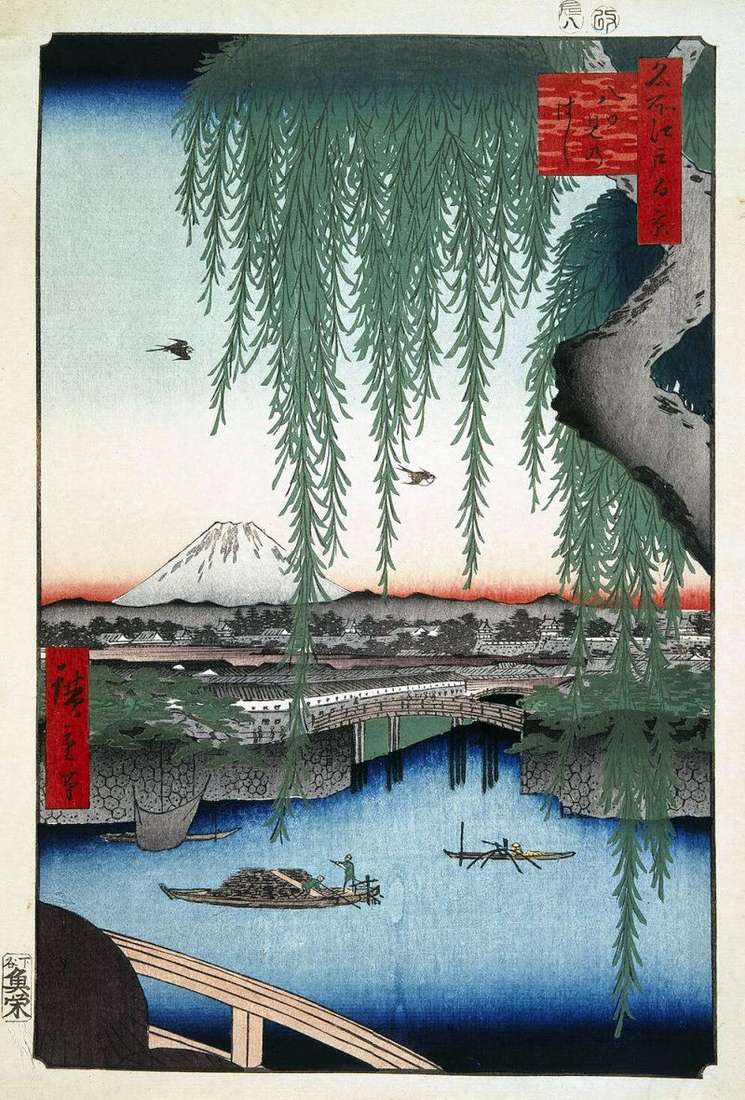
The Yatsumi-no hasi bridge is translated as “The Bridge of Eight Kinds,” the figure eight denotes the multiplicity of something, which means that species can be opened in any direction. Hiroshige shows only one – a panorama with the Edo Castle, the mansions of the Daimyo on the left and two bridges – Azenikibaisi and Dosanbasi. But from this place it was possible to see all eight bridges, this is another meaning of the name Yatsumi-no hasi. This bridge is still known as the bridge of Ikkokubashi, it stood at the confluence of the river Nihonbasigawa and the channel leading to the castle of Edo.
The engraving shows only the upper part of its handrails, and a large crowd is only indicated by the tips of the umbrellas of passers-by walking closely: it has always been crowded. Perhaps, therefore, on one of the sides of the bridge a sign with information about the lost children was installed. In the foreground there is an oak branch of willow. There are two boats on the river, one carries firewood on one, and nets on the other. In the center, in the distance you can see Edodze’s castle, above which, on the horizon, stands Fujiyama. Swallows are floating in the summer sky.
In comparison of these two sheets, early and late, one can note the overall colorful saturation of the later version. Thin gradations of the color of the first variant of the impression become somewhat rougher in the following.
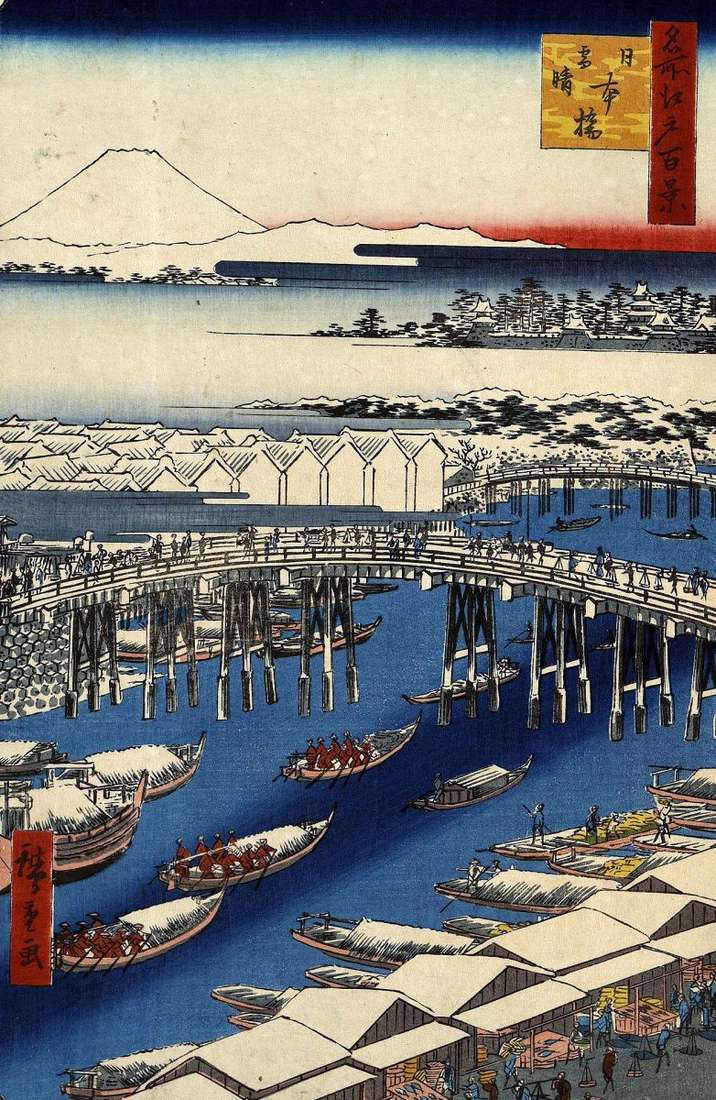 Nihonbashi bridge in clear weather after snowfall by Utagawa Hiroshige
Nihonbashi bridge in clear weather after snowfall by Utagawa Hiroshige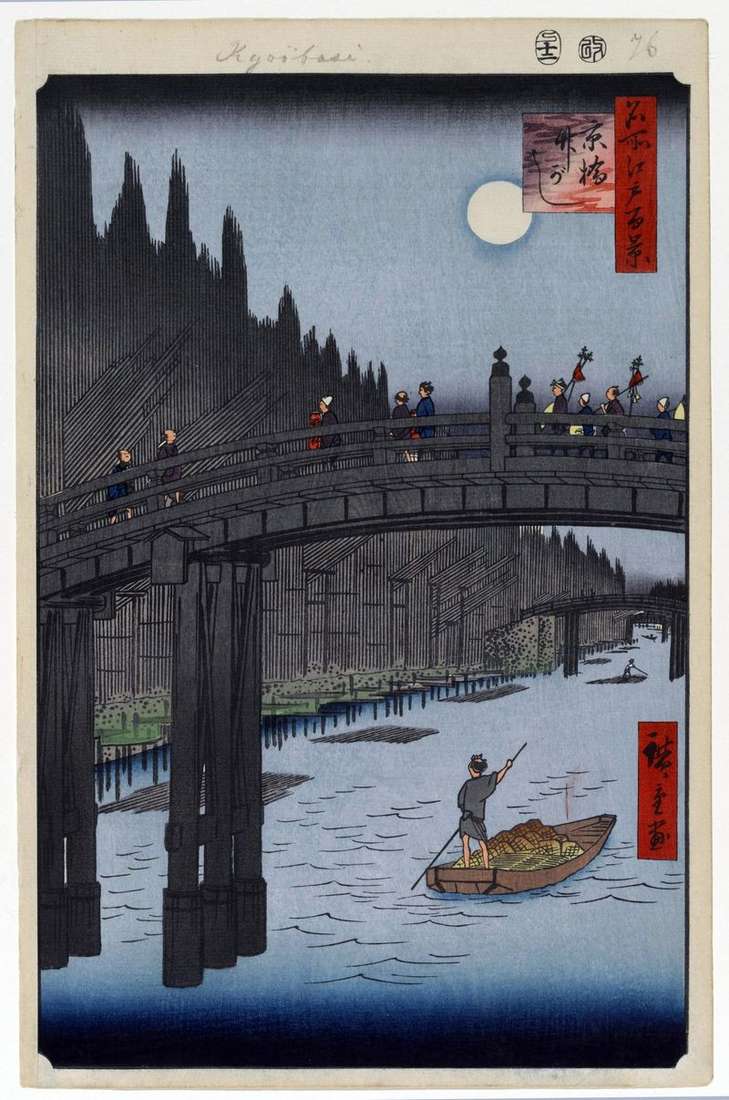 The Kebasi Bridge and the Takegashi Embankment by Utagawa Hiroshige
The Kebasi Bridge and the Takegashi Embankment by Utagawa Hiroshige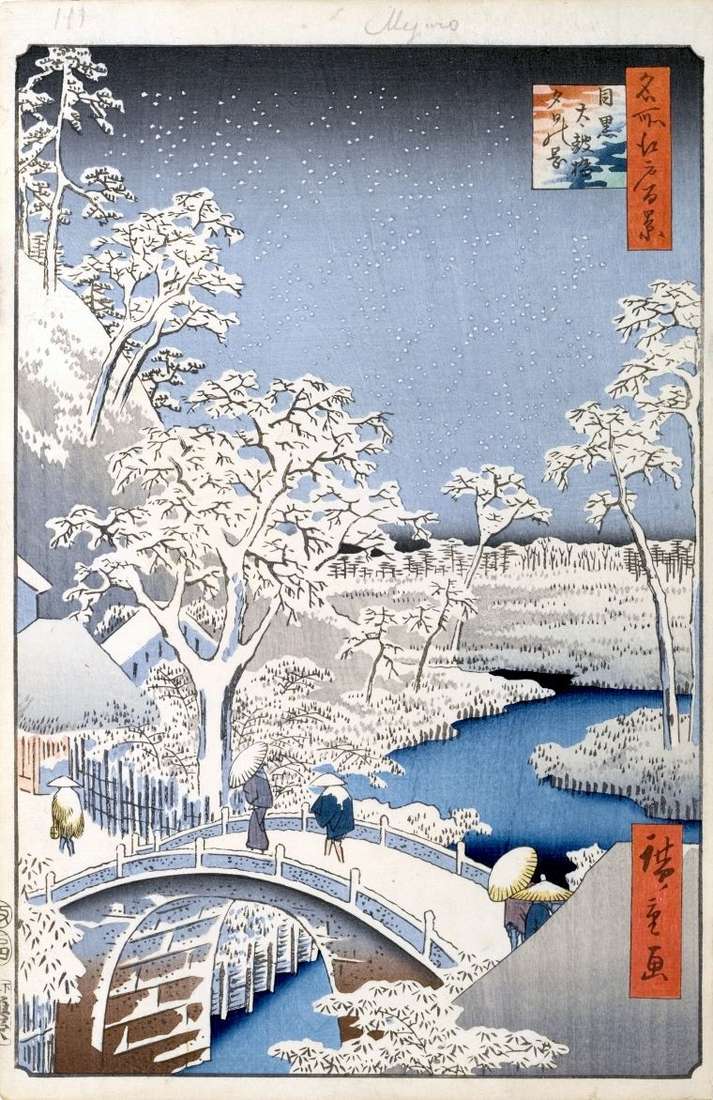 Yuhinooka hill and Taykobashi bridge in Meguro by Utagawa Hiroshige
Yuhinooka hill and Taykobashi bridge in Meguro by Utagawa Hiroshige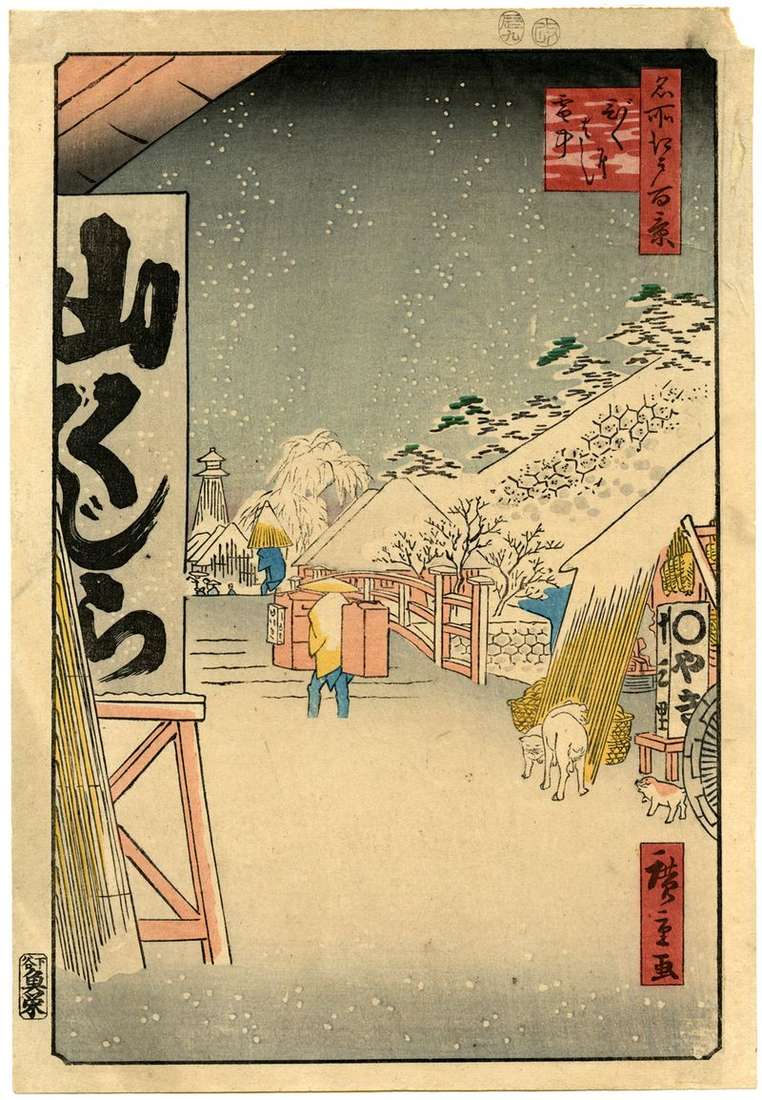 Snow-covered bridge Bikunibasi by Utagawa Hiroshige
Snow-covered bridge Bikunibasi by Utagawa Hiroshige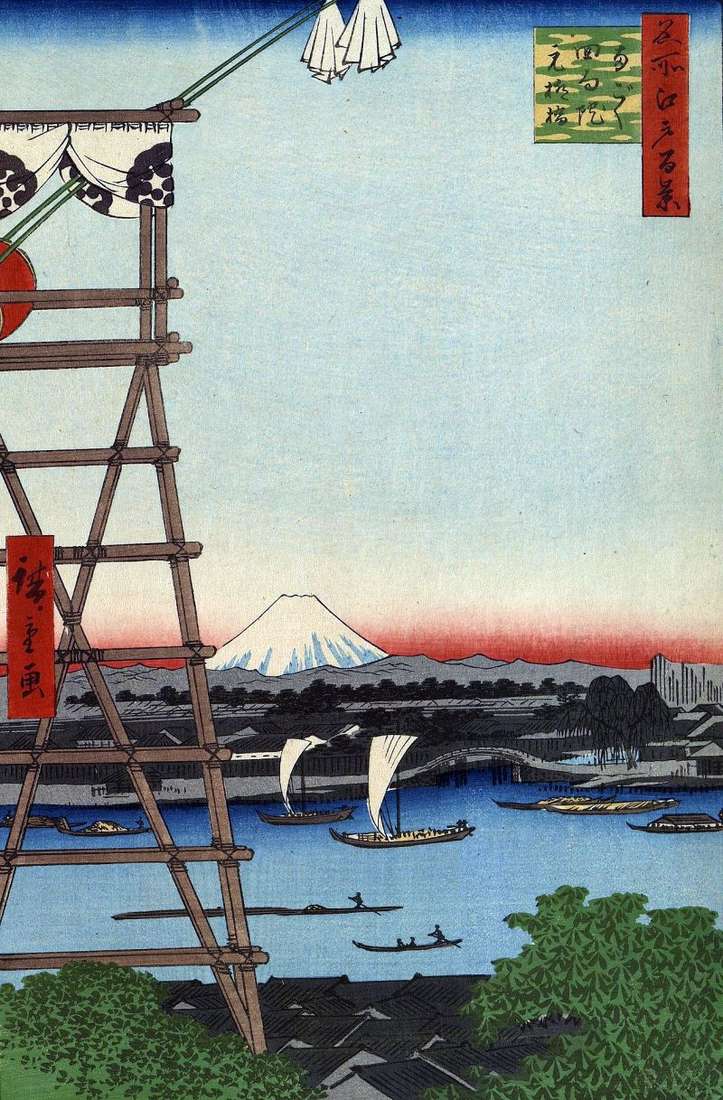 Monastery of Ekoin in Regoku and Moto-Yanagibashi Bridge by Utagawa Hiroshige
Monastery of Ekoin in Regoku and Moto-Yanagibashi Bridge by Utagawa Hiroshige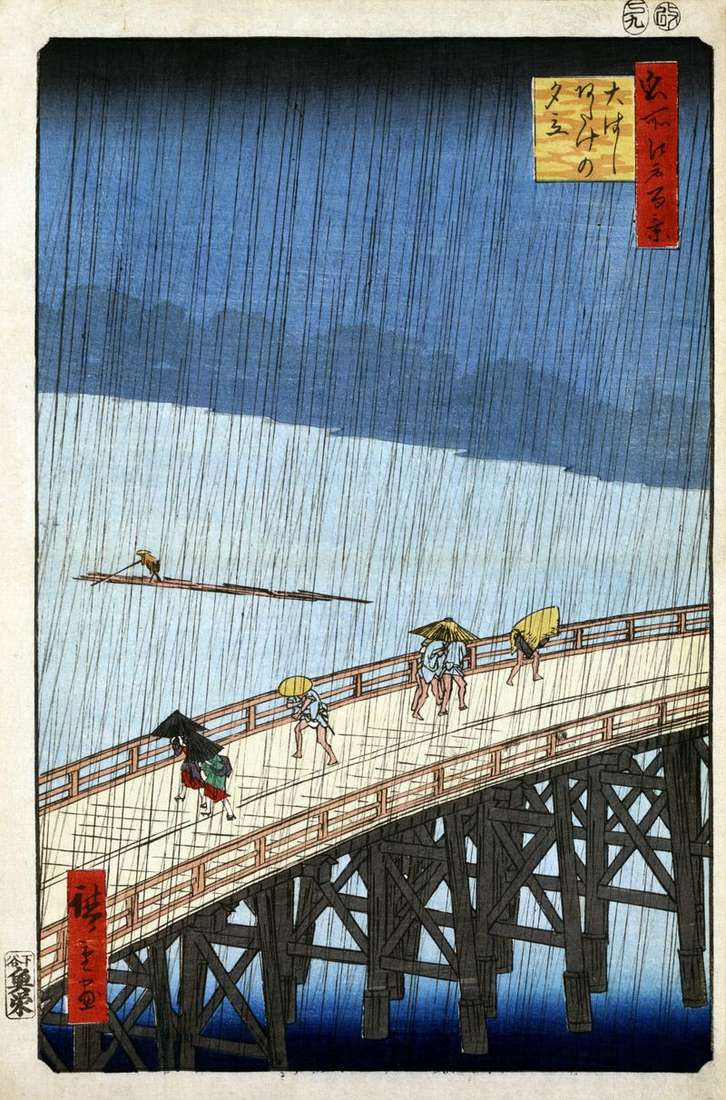 Rainfall over the bridge of Ohashi, Atake by Utagawa Hiroshige
Rainfall over the bridge of Ohashi, Atake by Utagawa Hiroshige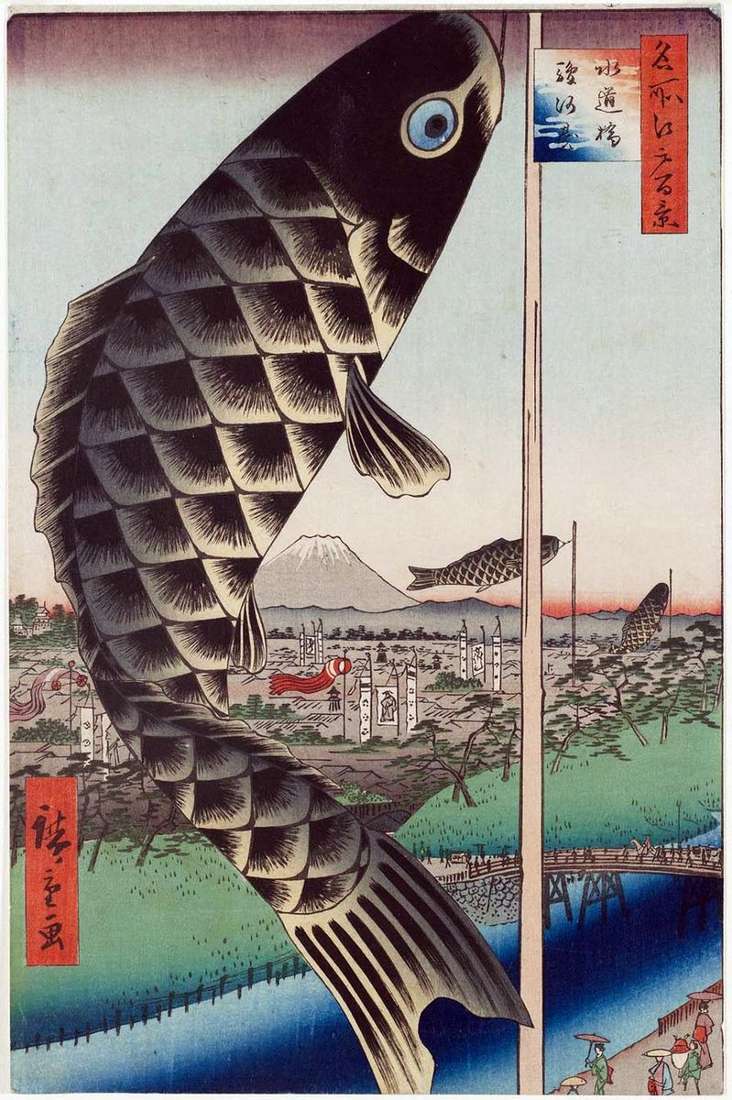 Suidobashi Bridge in Surugaday by Utagawa Hiroshige
Suidobashi Bridge in Surugaday by Utagawa Hiroshige The Ohashi Bridge in Senju by Utagawa Hiroshige
The Ohashi Bridge in Senju by Utagawa Hiroshige